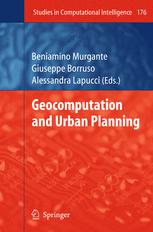

Most ebook files are in PDF format, so you can easily read them using various software such as Foxit Reader or directly on the Google Chrome browser.
Some ebook files are released by publishers in other formats such as .awz, .mobi, .epub, .fb2, etc. You may need to install specific software to read these formats on mobile/PC, such as Calibre.
Please read the tutorial at this link: https://ebookbell.com/faq
We offer FREE conversion to the popular formats you request; however, this may take some time. Therefore, right after payment, please email us, and we will try to provide the service as quickly as possible.
For some exceptional file formats or broken links (if any), please refrain from opening any disputes. Instead, email us first, and we will try to assist within a maximum of 6 hours.
EbookBell Team

4.3
38 reviewsSixteen years ago, Franklin estimated that about 80% of data contain geo-referenced information. To date, the availability of geographic data and information is growing, together with the capacity of users to operate with IT tools and instruments. Spatial data infrastructures are growing and allow a wide number of users to rely on them. This growth has not been fully coupled to an increase of knowledge to support spatial decisions. Spatial analytical techniques, geographical analysis and modelling methods are therefore required to analyse data and to facilitate the decision process at all levels. Old geographical issues can find an answer thanks to new methods and instruments, while new issues are developing, challenging researchers towards new solutions. This volume aims to contribute to the development of new techniques and methods to improve the process of knowledge acquisition. The Geocomputational expression is related to the development and the application of new theories, methods and tools in order to provide better solutions to complex geographical problems. The geocomputational analysis discussed in this volume, could be classified according to three main domains of applications; the first one related to spatial decision support system and to spatial uncertainty, the second connected to artificial intelligence, the third based on all spatial statistics techniques.